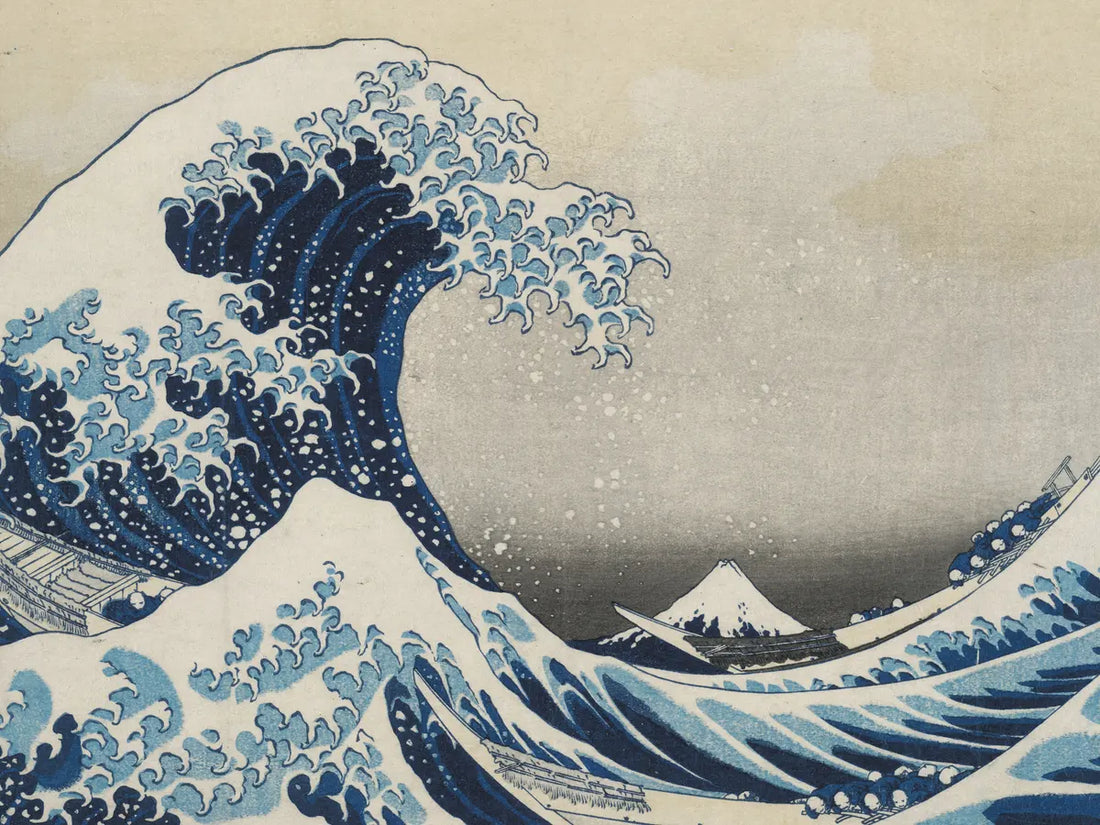In the smoky haze of Edo-period Japan, a mad artistic genius was born, writhing from the depths of creative chaos to harness the power of woodblock printing. Katsushika Hokusai, the enigmatic master of ukiyo-e, arose like a psychedelic phoenix, tearing down the boundaries of traditional Japanese art and setting the world ablaze with his wild, visionary landscapes. I, your humble narrator, shall recount the tale of this man, whose influence stretched across the globe like tendrils of smoke from an opium den, reaching the hearts and minds of great Western painters like Vincent van Gogh and Claude Monet.
Hokusai's magnum opus, the spectacular "Thirty-Six Views of Mount Fuji," stands as a testament to the man's unbridled genius. The Great Wave off Kanagawa is a woodblock print that has transcended time and space, crashing onto the shores of the world's collective consciousness, with the relentless force of nature itself. Hokusai was a relentless innovator, transforming ukiyo-e from a mere style of portraiture into a sprawling, fantastical world of landscapes, plants, and animals.
Born into a humble artisan family in the throes of the Edo period, Hokusai's artistic journey began at the tender age of six, painting his way into the annals of history. He changed his name more often than a snake sheds its skin, and like a shapeshifter, his art evolved with each metamorphosis. Hokusai was a tireless worker, producing over 30,000 works of art in a career that spanned nearly a century, stopping only when the great void finally claimed him.
As Hokusai's fame grew, so too did his appetite for the wild and the strange. His dalliances with European styles, gleaned from French and Dutch engravings, led to his expulsion from the Katsukawa school, an event that ignited the fires of his artistic rebellion. His subjects shifted from courtesans and actors to the everyday people of Japan, a change that heralded a new era for ukiyo-e and for Hokusai himself.
In the twilight years of his life, Hokusai adopted the name Gakyō Rōjin, "The Old Man Mad About Art." It was under this moniker that he produced his masterful series, "One Hundred Views of Mount Fuji," a collection that stands as a testament to his unwavering dedication to his craft. Despite the relentless march of time and the encroachment of younger artists, Hokusai never stopped learning and never stopped striving to become a better artist.
On his deathbed, he lamented, "If only Heaven will give me just another ten years... Just another five more years, then I could become a real painter." And so, the curtain closed on the life of Katsushika Hokusai, a man whose genius and influence spanned continents and centuries, leaving behind an indelible mark on the world of art. It is said that every artist has a bit of Hokusai within them, and as the ink of history continues to flow, his legacy shall endure, immortalized within the heart of every wave that crashes upon the shore.
